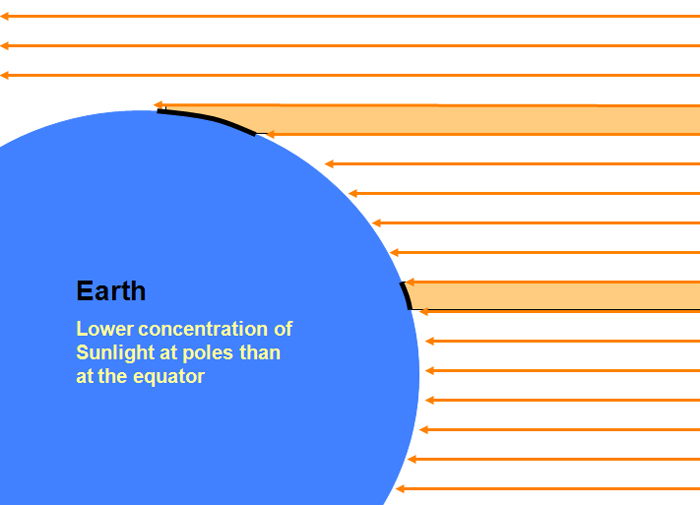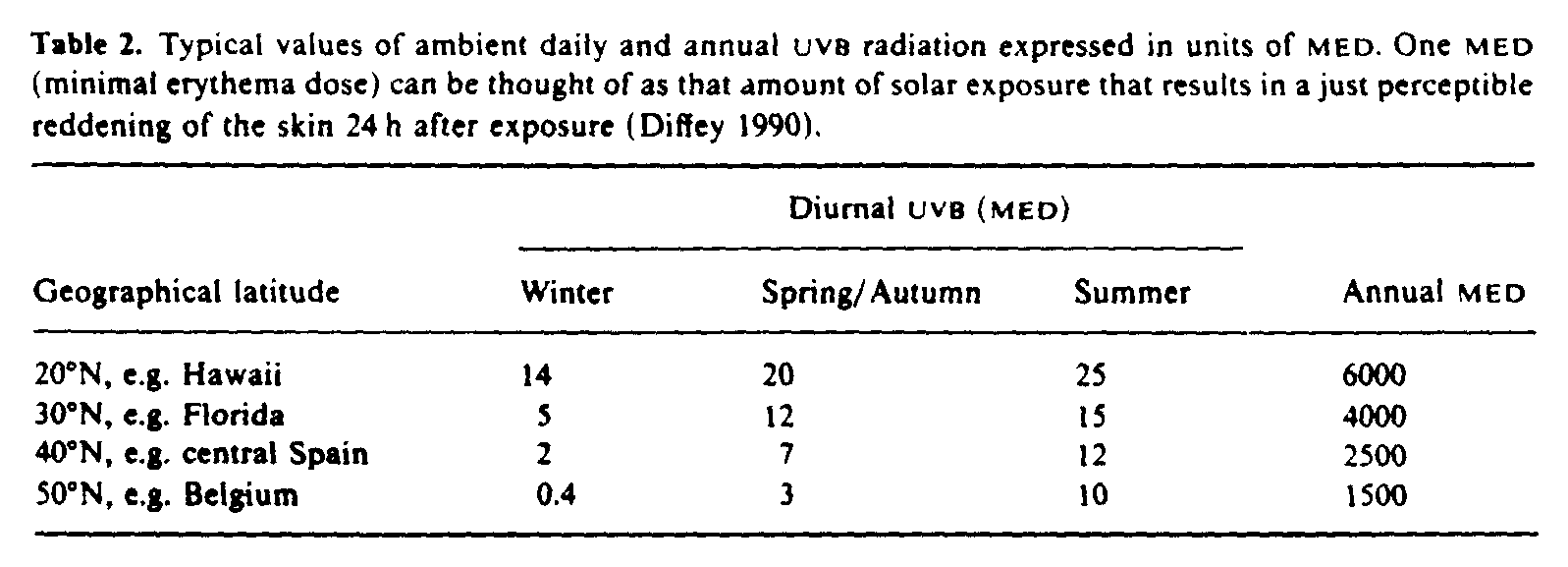 The figure below shows what your eyes typically perceive. You can note that the eye's ability to see starts at just over 400nm. And at 400nm in the above "figure 7" is where the wavelength no longer produces any vitamin D.
The figure below shows what your eyes typically perceive. You can note that the eye's ability to see starts at just over 400nm. And at 400nm in the above "figure 7" is where the wavelength no longer produces any vitamin D. Therefore we can conclude that it is the invisible UV radiation that gives our body the ability to make vitamin D.
Now the reason that this UV light is needed is because this has enough energy to provide the chemical reaction of making vitamin D to occur. Now this UV light needs to be "bright" enough to have enough energy to create the reaction. This is similar to taking a plant that needs bright light and planting it in area of dim light. The plant either struggles or dies because there is not enough energy in the sunlight to allow it grow via photosynthesis.
On a sphere (the earth) the parts by the poles receive weaker sunlight than the equator. This is illustrated in the following figure:
So the question is at what latitude can/cannot make vitamin D in exposing your skin. The effect of latitude is much more significant than one would expect. This is shown in the table below. 20 degrees or less there is lots of UV radiation. NZ is approximately 40 degrees..... and has the complicating factor that our UV radiation is higher than Europe.
In the UK which is approximately 50 degrees north and
in the UK it is likely there is insufficient ambient UVB during the winter to synthesize vitamin D3So winter 50 degrees is not good..... how about us???? I assume that in NZ we can generate vitamin D from the sunlight, as NIWA's web site states we should be able to.as they have a UV sunlight table.
So how long - and how much of our body do we need to expose to generate enough vitamin D. Very good question - I don't know. I am having trouble interpreting the table... hopefully over the next few days I can answer this.
References: Figure "7" Diffey, B. L. 1991. Solar ultraviolet radiation effects on biological systems. Review in Physics in Medicine and Biology 36 (3): 299-328.
Figure "2" Wikipedia: Visible spectrum
Figure 3: SDUSD Teacher Professional Development - 6th Grade - Earth Science. March 18th, 2009, Mission Bay High School. Presenter - Memorie Yasuda
Table 1, Diffey etc.
Quote ibad
NIWA table: Balancing risks and benefits of UV radiation. Richard McKenzie, Ben Liley, and Paul Johnston





No comments:
Post a Comment